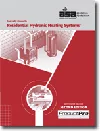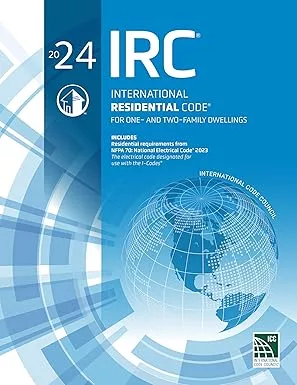Residential Variable-Speed Pumps
Sprinkler systems may be the next big use for variable-speed
pumps.
If you have ever installed a large commercial project requiring pumps on the water distribution system, you would have noticed that plumbing engineers have fallen in love with variable-speed pumps. I am in the same boat; I love variable-speed pumps.
There is a reason for this love affair. The pump curve for a variable-speed pump is a designer’s dream. When you read a pump curve, you are always looking for that optimum point on the curve when selecting a pump. Well, with a variable-speed pump, the optimum point is all over the place.
The beauty of a variable-speed pump is that you can have the pump flow at any given flow rate, depending on the demand of the system. Basically, you set the pressure for the system and you let the pump run at a speed that will maintain that pressure. I realize that this explanation is an oversimplification, but that is what this system does.
With variable-speed pumps, you can eliminate or reduce the size of a pressure tank used in conjunction with the system. Many high-rise buildings no longer have any pressure tanks associated with the pump system.
Another factor is that there is a lot of versatility in the system. If you make a slight mistake in the design, the pump will often correct your mistake.
When you look at a pump curve for a variable-speed pump, it can supply a flow as low as 3 gpm and as high as 30 gpm, simply by increasing or decreasing the speed of the pump. Whether it is plumbing demand or sprinkler demand, the variable-speed pump serves the purpose.
For residential buildings on a well system, the variable-speed pump is ideal for both multipurpose piping systems or stand-alone residential sprinkler systems. A single pump in the well can serve both demands.
One of the problems with commercial variable-speed pumps is that they operate on three-phase electrical service. Most residential buildings have single-phase service only.
I began my quest, trying to get the pump manufacturers to have a single-phase, variable-speed pump. Every time I asked, I was directed to one manufacturer. Every pump manufacturer directed me to the same competitor. That competitor is Grundfos. Mind you, I am not promoting Grundfos, it is just that it is the only pump manufacturer that I am aware of in the United States that produces a single-phase, variable-speed pump. The pumps have great pump curves.
My quest continued when I started speaking to the engineers of the various pump companies. Their response was, “Sure, Grundfos has a fine single-phase, variable-speed pump, but every one of our single-phase pumps can be converted to a variable-speed pump, as well.”
My response was, “What??”
They went on to explain that any pump today can be made into a variable-speed pump by simply adding a controller that converts the pump to a variable speed. I was intrigued, so I asked them to tell me more.
The engineer that first described it to me said that all you have to do is double the horsepower of your pump, add the controller and you have a variable-speed pump. Hence, if a 1/4-horsepower pump was necessary, you would install a 1/2-horsepower pump.
This just seemed too easy. But, in fact, it is just that easy. The controller sets the speed of the pump. All you are adding to the piping system is a pressure transducer that sends a signal to the pump controller. The controller does the rest.
Typically on a residential installation, the system will have a small pressure tank in the range of 2 gallons in size. The pressure tank takes care of the occasional surge that can occur in the system. The tank also maintains the pressure while the pump is starting.
If you are like me, your wheels are spinning about the use of variable-speed pumps for any residential plumbing system. With such pumps, you don’t have to figure a pressure range. I recall setting up many pumps to shut off at 60 psi and turn on at 40 psi. What that always said to me is that the system really only needed 40 psi.
With a variable-speed pump, you set the controller for 40 psi, and the system always stays right around 40 psi. There is no 20 psi pressure swing in the water distribution system.
The variable-speed pump can also adjust for lower-flow fixtures. As water demand is reduced, the pump demand is also reduced. Why pump at a high rate when a low rate is all that is required?
Next time you are talking to a pump sales representative, ask about converting your residential constant-speed pumps into variable-speed pumps. For a few dollars more, your customers will be pleasantly surprised with the improved performance of their water distribution system.
When you start adding a residential sprinkler system to all one- and two-family dwellings, the switch to variable-speed pumps will be a lifesaver, in more ways than one.
If you have ever installed a large commercial project requiring pumps on the water distribution system, you would have noticed that plumbing engineers have fallen in love with variable-speed pumps. I am in the same boat; I love variable-speed pumps.
There is a reason for this love affair. The pump curve for a variable-speed pump is a designer’s dream. When you read a pump curve, you are always looking for that optimum point on the curve when selecting a pump. Well, with a variable-speed pump, the optimum point is all over the place.
The beauty of a variable-speed pump is that you can have the pump flow at any given flow rate, depending on the demand of the system. Basically, you set the pressure for the system and you let the pump run at a speed that will maintain that pressure. I realize that this explanation is an oversimplification, but that is what this system does.
With variable-speed pumps, you can eliminate or reduce the size of a pressure tank used in conjunction with the system. Many high-rise buildings no longer have any pressure tanks associated with the pump system.
Another factor is that there is a lot of versatility in the system. If you make a slight mistake in the design, the pump will often correct your mistake.
Sprinkler Uses
An area that will be a wonderful use for residential variable-speed pumps is residential sprinkler systems. With a multipurpose piping system, the water demand for the plumbing system can be as low as 3 gpm when you flush a water closet. However, when there is a fire, the demand can go up to 26 gpm, or slightly higher, depending on the type of sprinkler installed.When you look at a pump curve for a variable-speed pump, it can supply a flow as low as 3 gpm and as high as 30 gpm, simply by increasing or decreasing the speed of the pump. Whether it is plumbing demand or sprinkler demand, the variable-speed pump serves the purpose.
For residential buildings on a well system, the variable-speed pump is ideal for both multipurpose piping systems or stand-alone residential sprinkler systems. A single pump in the well can serve both demands.
One of the problems with commercial variable-speed pumps is that they operate on three-phase electrical service. Most residential buildings have single-phase service only.
I began my quest, trying to get the pump manufacturers to have a single-phase, variable-speed pump. Every time I asked, I was directed to one manufacturer. Every pump manufacturer directed me to the same competitor. That competitor is Grundfos. Mind you, I am not promoting Grundfos, it is just that it is the only pump manufacturer that I am aware of in the United States that produces a single-phase, variable-speed pump. The pumps have great pump curves.
My quest continued when I started speaking to the engineers of the various pump companies. Their response was, “Sure, Grundfos has a fine single-phase, variable-speed pump, but every one of our single-phase pumps can be converted to a variable-speed pump, as well.”
My response was, “What??”
They went on to explain that any pump today can be made into a variable-speed pump by simply adding a controller that converts the pump to a variable speed. I was intrigued, so I asked them to tell me more.
The engineer that first described it to me said that all you have to do is double the horsepower of your pump, add the controller and you have a variable-speed pump. Hence, if a 1/4-horsepower pump was necessary, you would install a 1/2-horsepower pump.
This just seemed too easy. But, in fact, it is just that easy. The controller sets the speed of the pump. All you are adding to the piping system is a pressure transducer that sends a signal to the pump controller. The controller does the rest.
Typically on a residential installation, the system will have a small pressure tank in the range of 2 gallons in size. The pressure tank takes care of the occasional surge that can occur in the system. The tank also maintains the pressure while the pump is starting.
Use Less Power
Now that you are getting excited, let me throw in that a variable-speed pump is “green.” The pump, even though it is double the horsepower, will use less power. Since it is variable speed, you only draw the power necessary to have the pump meet the flow demand. With a constant-speed pump, the pump is always going full blast when it is on. I will have many argue with the green angle, but I still consider it a green approach to pumping water.If you are like me, your wheels are spinning about the use of variable-speed pumps for any residential plumbing system. With such pumps, you don’t have to figure a pressure range. I recall setting up many pumps to shut off at 60 psi and turn on at 40 psi. What that always said to me is that the system really only needed 40 psi.
With a variable-speed pump, you set the controller for 40 psi, and the system always stays right around 40 psi. There is no 20 psi pressure swing in the water distribution system.
The variable-speed pump can also adjust for lower-flow fixtures. As water demand is reduced, the pump demand is also reduced. Why pump at a high rate when a low rate is all that is required?
Next time you are talking to a pump sales representative, ask about converting your residential constant-speed pumps into variable-speed pumps. For a few dollars more, your customers will be pleasantly surprised with the improved performance of their water distribution system.
When you start adding a residential sprinkler system to all one- and two-family dwellings, the switch to variable-speed pumps will be a lifesaver, in more ways than one.
Links
Looking for a reprint of this article?
From high-res PDFs to custom plaques, order your copy today!








